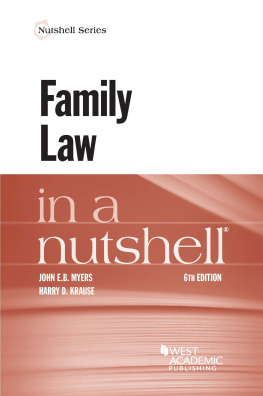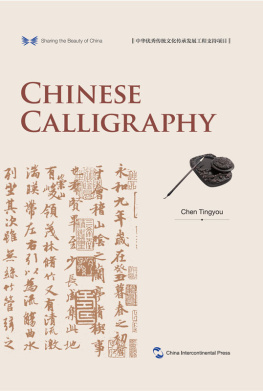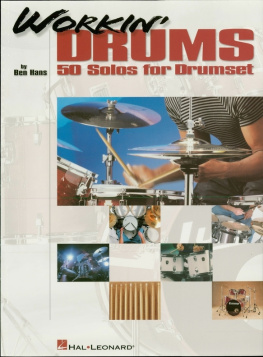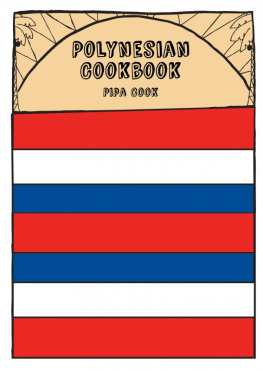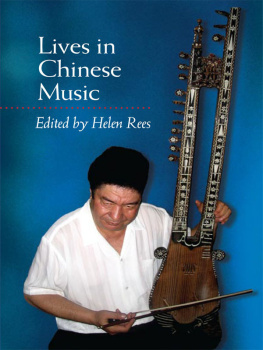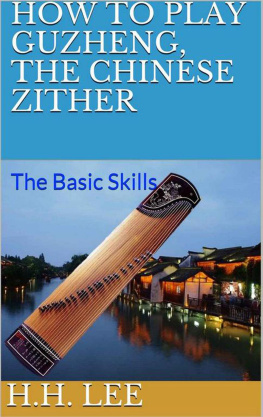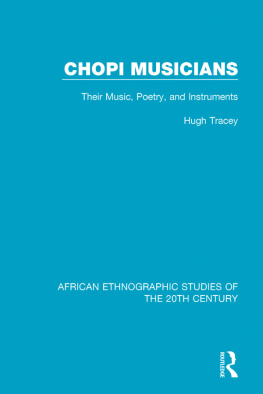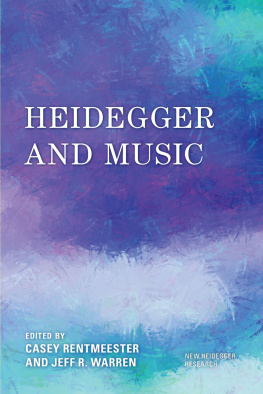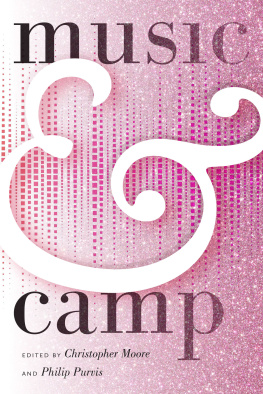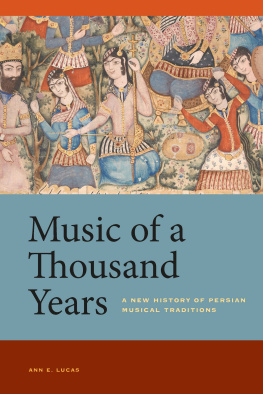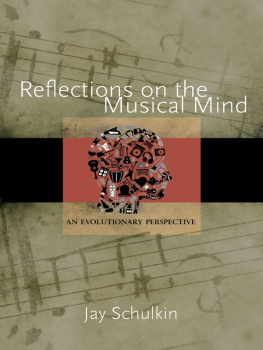James R. Cowdery
The Way of the Pipa
STRUCTURE AND IMAGERY
IN CHINESE LUTE MUSIC
John Myers
THE KENT STATE UNIVERSITY PRESS
Kent, Ohio, and London, England
1992 by the Kent State University Press, Kent, Ohio 44242
All rights reserved
Library of Congress Catalog Card Number 91-33965
ISBN 0-87338-455-5
Manufactured in the United States of America
Library of Congress Cataloging-in-Publication Data
Myers, John, 1951
The way of the pipa : structure and imagery in Chinese lute music / John Myers.
p. cm. (World musics)
Foreword also in Chinese.
Originally presented as the authors thesis (Ph. D.University of Maryland at Baltimore, 1987) under title: A critical study of a 19th century handbook for the Chinese pipa-lute.
Includes bibliographical references and index.
Discography: p.
ISBN 0-87338-455-5 (alk. paper) 
1. P i p a musicHistory and criticism. 2. P i p a music Analysis, appreciation. I. Title. II. Series.
ML1015.P5M9 1992
787.82dc20 91-33965
British Library Cataloging-in-Publication data are available.
To Alice
That you would include me
in your indescribable collage of meaning and beauty,
I remain permanently grateful.
Contents
The following is a list of the music examples found in The Way of the Pipa. The works are listed in the order of their title number (for example, T64F refers to section F of the sixty-fourth piece to appear in the Hua Collection, The Five Elements of Supreme Ethics) and are frequently referred to in the text in their abbreviated form.
| Title number | Musical Work |
| T2 | Silk Thread |
| T4 | The Phoenix Birds Courting |
| T6 | A Cluster of Grapes |
| T7 | The Thick Clouds Descend |
| T13F | Skirmish |
| T13G | Battle Cry |
| T16 | Zhaojuns Lament |
| T23 | A Speckled Dove Crosses the River |
| T27 | Rain Strikes the Banana Tree |
| T35 | The Morning Dew |
| T44 | A Thousand Victories |
| T45 | Beautiful Spring |
| T47 | Endless Waves of Clouds |
| T57 | The Bee and the Butterfly Fight Over Spring |
| T61 | The Butterfly Makes Love to the Flower |
| T64A | The Stable |
| T64F | The Five Elements of Supreme Ethics |
| T65E | Transition |
| T65H | Small Trumpeting |
| T66E | Floating on the Clouds |
| T66M | Duel in the Sky |
| T67A | Night Moon Over the Island |
| T671 | Jade Pagoda of a Thousand Floors |
| T68C | Incense and Praise |
| T68G | Song of the Yu Mountain Temple Blocks |

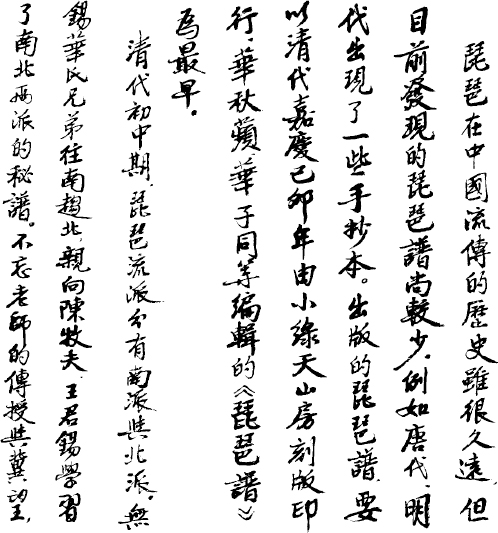
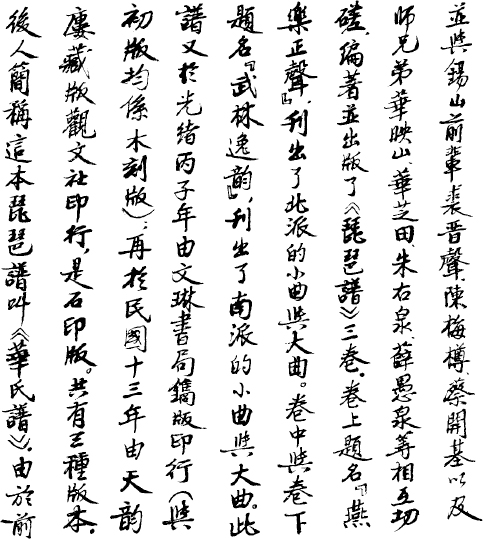
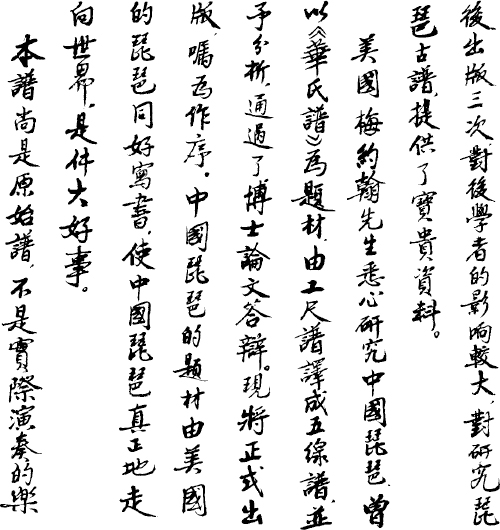
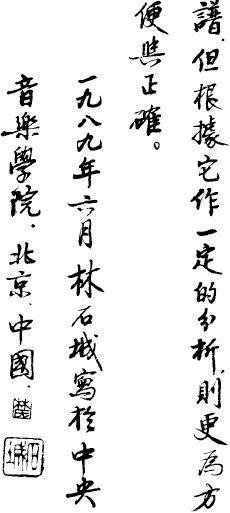
The pipa traditions of China have a two-thousand-year history. Multitudes of musicians have unceasingly practiced and perfected the pipa, resulting in todays forms and standards. Because of this, the pipa has strong expressive power, beloved of those able to appreciate its depth. Over a long period, many performers and music scores have come forth. Internationally, one often finds approval and praise when Chinas pipa is played well!
Although the history of Chinas pipa traditions reaches back to ancient times, very few pipa music scores have emerged until recently. For example, a few hand-copied manuscripts from the Tang [A.D. 618905] and Ming [A.D. 13681644] dynasties have appeared, but in terms of published pipa scores, the earliest is the Hua Shi collection, printed with woodblocks by Hua Qiupin, Hua Zitong, and others at the Xiaolu printing shop in 1819, during the Jiaqing period of the Qing dynasty [A.D. 16441911].
During the early and middle periods of the Qing dynasty, the oral traditions of pipa were divided into the southern and northern schools. The Hua brothers of Wuxi, using carefully preserved manuscripts, studied the southern traditions with Chen Mufu and the northern traditions with Wang Junxi. Forgetting neither the aspirations of their teachers nor the customary regional styles of Xishan (now known as Wuxi), Chen Meibuo, Cai Kaiji, the brothers Hua Yingshan and Hua Zhitian, with Zhu Shiquan, Bi Yuquan and others, working and consulting together, edited and published the Pipa Scorebook in three volumes. Volume one was identified as The True Sound of Yan Music, indicating the small and large pieces from the northern traditions, and volumes two and three were identified as The Refined Sounds of Wulin, indicating the small and large pieces from the southern traditions. The book was reengraved and reprinted in 1876 by the Wenlin bookshop. (This edition, like the first, was also produced with woodblocks.) Again in 1924, during the Republican Period, it was reissued by Guan Publications and printed at the Tianjun Press, this time with engraved blocks of stone. Later, people referred to this pipa scorebook as the Hua Shi Pu (Hua Family Collection). Because it was published three times, its influence on later scholars has been comparatively great, and it provides precious material for researching the repertoire.
John Myers of the United States has diligently researched the Chinese pipa. He chose the Hua Collection as a topic, and translated its gongche notation into staff notation. His complete analysis has been defended and approved as a Ph.D. dissertation. Now it is to be formally published, and this is the foreword. The Chinese pipa is now the subject of a book written by an American who shares our interest and who sincerely conveys the Chinese pipas features to the world. This is a positive and significant event.
Although the early scores are primitive and are not actual performance versions, they are all the more convenient and correct as a basis for analysis.


